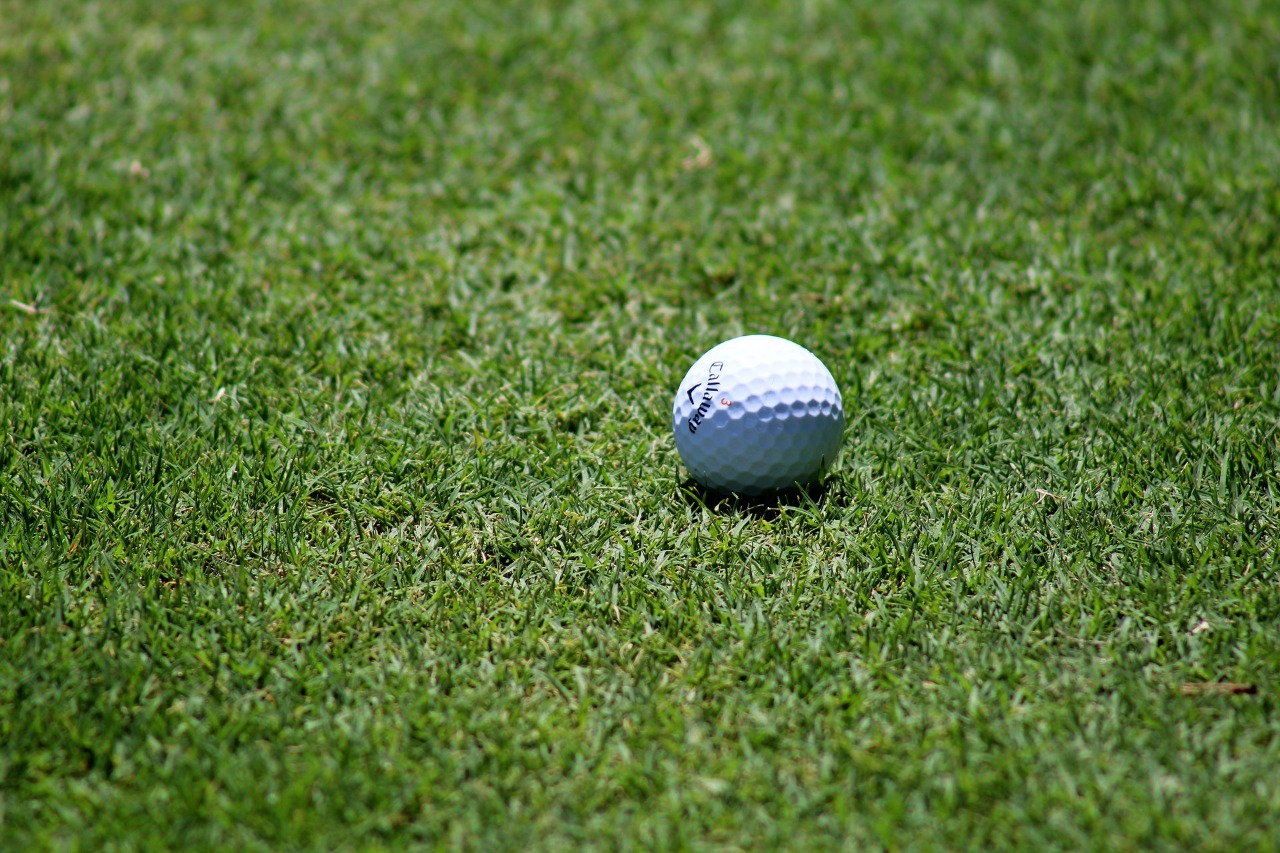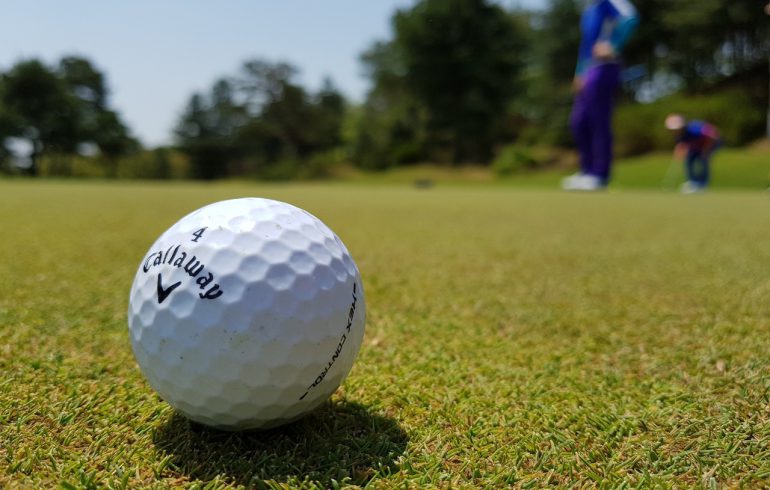Introduction
Is golf compression does matter to you? You will surely often hear the term golf compression in the golf course, but what does it mean? Do you see and feel those dimples in golf balls? Beginners may explain the purpose of those dimples, but they may not understand for now the
Most golf balls come in white, but modern balls come in different colors such as yellow, green, gold, orange, and even black! But there are more colors to choose from nowadays! Despite the variations in colors, the golf balls have classifications according to their compression rating.
The golf ball compression is one way of measuring the overall hardness of the ball. A lower compression factor tells a softer golf ball, while a higher rating connotes a hard golf ball.
This post will take you further into the golf ball compression characteristics. We will also show you the golf ball compression charts of some of the leading brands. We will feature compression ratings of golf ball brands like Bridgestone, Callaway, Cut, Mizuno, TaylorMade, Titleist, and Volvik, among others.
Well, discover more about golf ball compression by continuing reading!

Everything you need to know about Golf Ball Compression
Several variables determine a golf ball’s performance, but the compression rating (or factor) is one of the most useful. But what golf ball compression is all about? To explain it simpler: golf ball compression is the measurement of how the clubface presses the ball upon impact.
The pressing manner on the golf ball the clubface provides during impact is called compression. It is the calculation of the force the ball received: the compression rating measures in number, like 70 or 100.
Watch Bryson DeChambeau’s high-speed video of his golf ball at impact: https://www.youtube.com/watch?v=c-0dDKfw4NI
The slow-motion video shows you how a golf ball compresses when hit by the club. The video shows a ball strike off the tee, where swing speed is higher. The second strike is from the green with a slower swing speed.
Compression and rebound
The word compression comes about in golf balls because of the force impacted by the clubface into the ball. Once the club strikes the ball, it will first squeeze (or compresses) when receiving the impact and then rebounds. Depending on the force (swing speed) you exert, the ball will bounce (because of the energy transfer) and travels a certain distance.
Compression ratings of golf balls
The golf ball compression rating describes how hard or soft the ball is. In general, brands rate golf ball compression between 30 and 120. The softest is 30, while 120 is the hardest. To be more understood: the lower the compression, the softer the ball, and the higher the compression rating, the harder the ball.
To have a more specific golf ball compression factor, experts laid down the following ranges and descriptions:
- Low compression: 65 and less (has softer core; compresses quickly; and with maximum distance on lower speeds).
- Medium-compression: 66 to 89 (with standard cores, in-between core; and maximized range with average swing speeds).
- High compression: 90+ (with a harder core: compresses slowly, and maximum distance with high or fast swing speeds).
Some golf ball manufacturers put the ball rating on the packaging. However, the number on golf balls is not the compression rating.
What are golf ball layers?
The materials of golf balls nowadays have two to five-ply. The core is pressurized or synthetic rubber covered by one or several outer layers and a dimpled cover. A golf ball with two layers is called a 2-piece. These balls are cheaper and ideal for beginners.
Those with three layers are called 3-piece, and the four-layer golf ball is called 4-piece. The current golf ball layers are five, called the 5-piece. Amateurs and intermediate players prefer the 3-piece balls, while pros and advanced players prefer the 4-piece or the 5-piece.
Most low compression golf balls are 2-piece construction and so on.
Golf Ball Compression Chart
Here is the compression ratings of different golf ball brands, so you can clearly understand what a compression rating means. Take a closer look at this chart, and later we will tell you the right golf ball for you depending on your skill. The table below will also show the perfect golf ball that will correspond to your swing speed
|
Golf Ball Brand |
Construction |
Compression |
Swing Speed Classification |
| Bridgestone Tour B X | 3 Piece | Medium (85) | Fast |
| Bridgestone Tour B XS | 3 Piece | Medium (85) | Fast |
| Bridgestone Tour B RX | 3 Piece | Low (65) | Mid |
| Bridgestone Tour B RXS | 3 Piece | Low (65) | Mid |
| Bridgestone e12 Soft | 3 Piece | Low (50) | Mid |
| Bridgestone e12 Speed | 3 Piece | Medium (75) | Fast |
| Bridgestone e6 | 2 Piece | Low (45) | Mid |
| Bridgestone e6 Lady | 2 Piece | Low (40) | Mid |
| Bridgestone Laddie Extreme | 2 Piece | Low | Slower |
| Callaway Chrome Soft | 3 Piece | Medium (75) | Mid |
| Callaway Chrome Soft X | 4 Piece | High (90) | Fast |
| Callaway ERC Soft | 2 Piece | Low (60) | Mid |
| Callaway Supersoft | 2 Piece | Low (40) | Slower |
| Callaway Supersoft Magna | 2 Piece | Low (40) | Slower |
| Callaway Superhot | 3 Piece | Low (50) | Mid |
| Callaway Warbird | 2 Piece | High (90) | Mid |
| Callaway Strata Eagle | 3 Piece | Medium | Mid |
| Cut DC | 4 Piece | High (105) | Fast |
| Cut Blue | 4 Piece | High (90) | Fast |
| Cut Grey | 3 Piece | Medium (80) | Mid |
| Cut Red | 2 Piece | Low (60) | Slower |
| Cut Matte | 3 Piece | Low (65) | Mid |
| Mizuno RB Tour | 4 Piece | High (90) | Fast |
| Mizuno RB Tour X | 4 Piece | High (110) | Fast |
| Mizuno RB 566 | 2 Piece | Low | Mid |
| Mizuno RB 566 V | 3 Piece | Low | Mid |
| Snell MTB-X | 3 Piece | High (90) | Mid |
| Snell MTB-Black | 3 Piece | Medium (80) | Mid |
| Snell Get Sum | 2 Piece | Low | Slower |
| Srixon Z-Star | 3 Piece | High (90) | Mid |
| Srixon Z-Star XV | 4 Piece | High (100) | Faster |
| Srixon Q-Star | 2 Piece | Medium (75) | Mid |
| Srixon Q-Star Tour | 3 Piece | Medium (70) | Mid |
| Srixon Soft Feel | 2 Piece | Low (60) | Slower |
| Srixon Soft Feel Lady | 2 Piece | Low (60) | Mid |
| Taylormade TP5 | 5 Piece | Medium (80) | Mid |
| Taylormade TP5X | 5 Piece | High (90) | Faster |
| Taylormade TP5 Pix | 5 Piece | Medium (85) | Mid |
| Taylormade TP5X Pix | 5 Piece | High (100) | Faster |
| Taylormade Tour Response | 3 Piece | Medium (70) | Mid |
| Taylormade Project (a) | 3 Piece | Medium (70) | Mid |
| Taylormade Soft Response | 3 Piece | Low | Mid |
| Taylormade Noodle Long And Soft | 2 Piece | Low (35) | Slower |
| Titleist ProV1 | 3 Piece | High (90) | Mid |
| Titleist ProV1X | 4 Piece | High (100) | Faster |
| Titleist AVX | 3 Piece | Medium (80) | Mid |
| Titleist Tour Speed | 3 Piece | Medium (80) | Mid |
| Titleist Tour Soft | 2 Piece | Medium (65) | Mid |
| Titleist Velocity | 2 Piece | Medium | Mid |
| Titleist TruFeel | 2 Piece | Low | Slower |
| Vice Pro | 3 Piece | Low | Mid |
| Vice Pro Soft | 3 Piece | Low | Slower |
| Vice Pro Plus | 4 Piece | High | Fast |
| Vice Tour | 3 Piece | Low | Mid |
| Vice Drive | 2 Piece | Low | Slower |
| Volvik Vivid | 3 Piece | Medium (80) | Slower |
| Volvik Vivid Lite | 3 Piece | Medium (75) | Slower |
| Volvik S3 | 3 Piece | Medium (85) | Mid |
| Volvik S4 | 4 Piece | High (95) | Fast |
| Volvik Crystal | 3 Piece | High | Slower |
| Volvik Solice | 3 Piece | Medium | Mid |
| Volvik Power Soft | 2 Piece | Medium (70) | Mid |
| Volvik ViMax Soft | 2 Piece | Medium (75) | Slower |
| Volvik XT Soft | 3 Piece | Medium (70) | Slower |
| Volvik XT AMT | 3 Piece | High (90) | Mid |
| Wilson Staff Model | 4 Piece | High | Faster |
| Wilson Duo Professional | 3 Piece | Low (60) | Mid |
| Wilson Duo Soft+ | 2 Piece | Low (35) | Slower |
| Wilson Duo Optix | 2 Piece | Low (30) | Slower |
| Wilson Fifty Elite | 2 Piece | Low (50) | Slower |
| Wilson Zip | 2 Piece | Low | Mid |
| Wilson Tour Velocity Distance | 2 Piece | Medium | Mid |
| Wilson Tour Velocity Feel | 2 Piece | Medium | Mid |
Which Compression is Right for You?
Golf ball compression is one of the many factors you may consider in picking the perfect ball for you. But more experts will agree that once you know your swing speed, you can start from there. The golf ball compression chart we provided is also one of the most comprehensive guides. You can rely on these charts and may base your decision on buying golf balls.
Moreover, if you have a low swing speed (less than 85mph), choose a low-compression ball. If you have a medium swing speed (ranging from 85 to 104mph): a medium compression golf ball may suit your skill. And finally, if you have a high swing speed (more than 105mph), the high compression ball is ideal for you.
Conclusion
So, now you know what golf ball will suit your skill. Please do not forget to consult the golf ball compression chart above if you are still looking for the appropriate ball for you. Sometimes, a chart tells more than a golf buddy!

